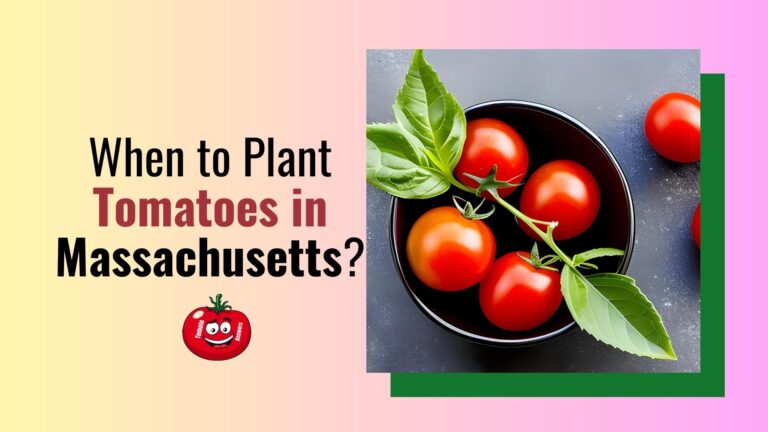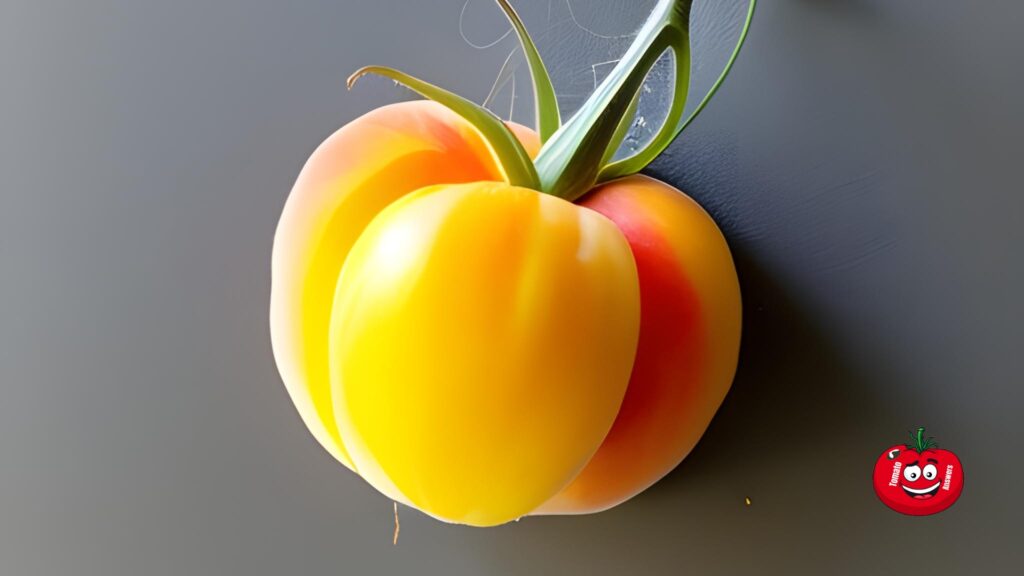In This Article
When To Plant Tomatoes In Massachusetts?
Introduction
Growing juicy, vine-ripened tomatoes is a rewarding experience for any home gardener in Massachusetts. With proper planning and care, harvesting bountiful crops of delicious tomatoes is possible throughout the short New England growing season.
This guide will walk you through everything you need to know about when and how to plant tomatoes for success in Massachusetts.
Understanding Massachusetts’s Climate and Growing Conditions
Massachusetts’s Climate and Tomato Cultivation
Massachusetts has a humid continental climate with warm, humid summers and cold winters. This can present challenges for growing heat-loving crops like tomatoes. Pay close attention to your region’s frost dates and plant accordingly. Choose short-season tomato varieties that can ripen before the first fall frost.
Choosing the Right Tomato Varieties for Massachusetts
Look for quick-maturing tomato varieties under 80 days. Good options include Early Girl, Better Boy, Celebrity, and Sungold cherry tomatoes. Determinate tomatoes stop growing when fruit sets, while indeterminate varieties continue growing and producing all season.
Preparing the Soil for Planting Tomatoes In Massachusetts
Clearing and Loosening the Soil
Prepare your planting area at least 2-3 weeks before transplanting seedlings. Remove any weeds, grass, and rocks. Loosen the soil to a depth of at least 12 inches using a shovel or tiller.
Enriching the Soil
Tomatoes thrive in nutrient-rich soil. Mix several inches of aged compost or other organic material like peat moss before planting. A balanced organic fertilizer can also give your plants a boost.
Best Time to Grow Tomatoes In Massachusetts
Consider The Frost Dates
In Massachusetts, it’s best to plant tomatoes after the last expected spring frost, which is around May 15-30 for most areas. Planting too early increases the risk of losing plants to cold weather.
Consider The Temperature
Ideally, tomatoes should be planted when soil temperatures reach at least 60-65°F. Wait until nights are regularly above 50°F.
Check The Soil
The soil should be workable and dry enough to till or dig in. Wet soggy soil can stunt tomato root development.
Best Planting Techniques for Tomatoes in Massachusetts
Mulching and Moisture Conservation
Apply 2-3 inches of mulch-like straw around plants to conserve moisture and prevent weeds. Mulch also helps buffer soil temperature.
Proper Watering Techniques
Water tomato plants thoroughly at ground level to encourage deep roots. About 1-2 inches per week is ideal, adjusting for rainfall. Consistent moisture is key.
How To Fertilize Tomatoes
Use a balanced organic tomato fertilizer every 2-3 weeks after transplanting and when plants start flowering and setting fruit. Too much nitrogen leads to excess foliage over fruit.
Care and Maintenance
Stake or cage plants to support growth. Prune off lower suckers and leaves touching the ground. Check daily for pests and diseases.
Dealing with Common Tomato Pests and Diseases in Massachusetts
Tomato Pests in Massachusetts
Watch for hornworms, aphids, cutworms, beetles, and other pests. Handpick or use organic insecticidal soap as needed. Row covers can also prevent insects.
Preventing Tomato Blight
Tomato blight is a fungal disease worsened by humidity. Space plants appropriately and remove diseased leaves immediately. Cultivate resistant varieties.
Controlling Tomato Hornworms
These large green caterpillars can quickly defoliate plants. Handpick them off, or use Bacillus thuringiensis (Bt) organic pest control measures.
Harvesting and Enjoying Your Homegrown Tomatoes In Massachusetts
Preserving Your Harvest
Enjoy fresh tomatoes all season. Preserve extras by canning tomato sauce or salsa, freezing diced tomatoes, or dehydrating tomato slices.
3 Best Mouth-Watering Tomato Recipes In Massachusetts
There are endless ways to savor peak summer tomatoes, from classic tomato basil bruschetta to garden fresh tomato soup and homemade pizza. Share the harvest!
Extra Tips for Growing Tomatoes In Massachusetts
- Start seeds indoors 6-8 weeks before last spring’s frost date
- Use black plastic mulch to warm soil and boost yields
- Support plants with cages or stakes to prevent disease
- Prune off lower leaves and branches to improve air circulation
- Pick tomatoes at peak ripeness for the best flavor
Can I Plant Tomatoes Now In Massachusetts?
The best time to plant tomatoes in Massachusetts is after the last expected spring frost, around May 15-30 for most areas. Planting too early during cool nights will slow growth and make plants more vulnerable to cold damage. Wait until soil temperatures reach at least 60-65°F before transplanting seedlings into the ground.
What Month Is Best To Sow Tomatoes In Massachusetts?
For growing tomatoes from seed, start seeds indoors in warm, sunny spots about 6-8 weeks before your last expected spring frost date.
Most regions of Massachusetts aim to sow tomato seeds in mid to late March, so plants are ready for transplanting outside in May when the soil has warmed sufficiently.
Can You Grow Tomatoes In Massachusetts Summer?
Absolutely! Summer is the peak tomato growing season in Massachusetts. Ensure plants receive at least 6-8 hours of direct sunlight daily.
Provide consistent moisture through drip irrigation or hand watering, about 1-2 inches weekly. Stake, cage, or trellis plants and prune off lower foliage. Harvest tomatoes at peak ripeness for maximum sweetness and flavor.
Do Tomatoes Need Full Sun In Massachusetts?
Tomatoes thrive best with at least 6-8 hours of direct sunlight daily. The full sun allows plants to produce the energy they need through photosynthesis. Insufficient sunlight in Massachusetts results in reduced flower and fruit production. Pick a sunny, south-facing spot sheltered from cold winds for your tomato garden.
Is Massachusetts Too Hot For Tomatoes?
Heat shouldn’t be a problem for growing tomatoes in Massachusetts, even during summer heat waves. Daytime high temperatures typically don’t exceed 90°F for prolonged periods.
As plants receive adequate moisture, tomatoes can tolerate Massachusetts summer heat. Mulch around plants, provide shade cloth if needed, and watch for signs of heat stress like wilting leaves.
Can Tomatoes Grow In The Winter In Massachusetts?
No, Massachusetts winters are far too cold for tomatoes to grow outdoors successfully. The average low temperatures fall well below freezing.
Tomato plants cannot survive frost or freezing conditions. However, you can grow tomatoes indoors during winter using grow lights or greenhouses to provide sufficient warmth and sunlight.
Can You Grow Tomatoes In The Fall In Massachusetts?
It’s possible to extend the tomato growing season into fall in Massachusetts by choosing short-season varieties under 80 days.
Quick maturing, determinate tomatoes like Early Girl and Better Boy may have time to produce before the first light fall frosts. Provide frost protection with cloches or fabric row covers as needed. Harvest green tomatoes before frost to ripen indoors.
How Long Do Tomatoes Take To Grow In Massachusetts?
Most tomato varieties mature in 50-80 days from transplanting seedlings into the garden. During Massachusetts ‘ warm growing season, quick maturing varieties may produce ripe tomatoes in as little as 45-55 days. Give plants at least 6-8 weeks of warm temperatures to establish before the first fall frost arrives.
How Often Do You Water Tomatoes In Massachusetts?
Tomatoes require consistent moisture, about 1-2 inches of water per week from either rainfall or irrigation. Water at the soil level avoids wet foliage, which can encourage disease.
The frequency depends on soil type, temperature, and tomato variety. Check soil moisture daily. Water thoroughly when the top few inches dry, but avoid over-saturating the soil.
Conclusion
With the right techniques and timing for your region, growing an abundant tomato crop in Massachusetts is possible. When planting, pay close attention to soil temperature, moisture levels, and frost dates.
Choose quick-maturing varieties suited to the New England climate. Stake plants for support and use mulch to retain moisture. Harvest tomatoes at peak ripeness and enjoy fresh summer recipes.


